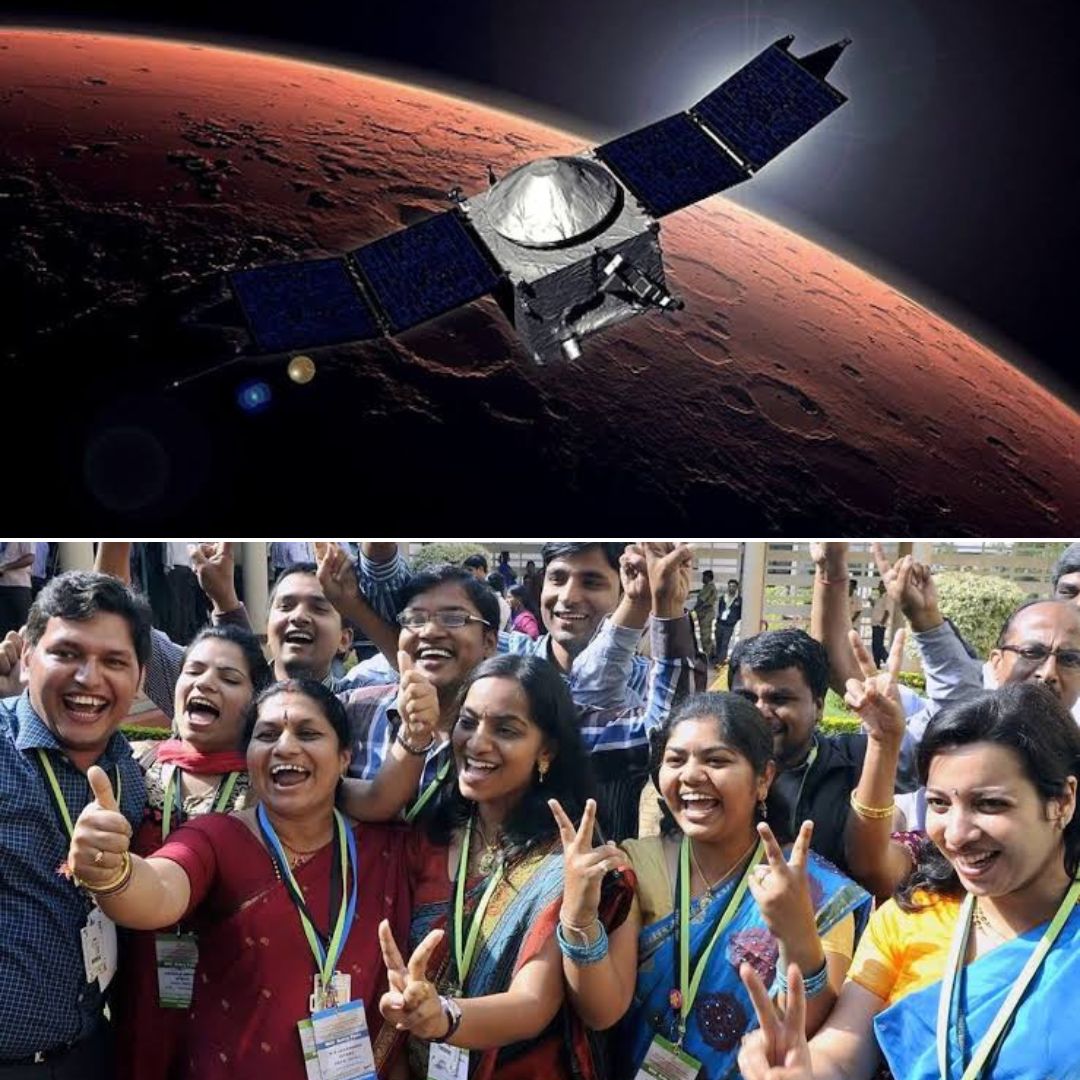
Image Credits: Facebook and India Today
As India Bids Goodbye To Mangalyaan, Here's All You Need To Know About Asia's Pride
Writer: Laxmi Mohan Kumar
She is an aspiring journalist in the process of learning and unlearning many things. Always up for discussions on everything from popular culture to politics.
India, 3 Oct 2022 6:22 AM GMT
Editor : Snehadri Sarkar |
While he is a massive sports fanatic, his interest also lies in mainstream news and nitpicking trending and less talked about everyday issues.
Creatives : Laxmi Mohan Kumar
She is an aspiring journalist in the process of learning and unlearning many things. Always up for discussions on everything from popular culture to politics.
Deemed as the Pride of Asia, Mangalyaan was India's first ever interplanetary mission designed to orbit mars for six months. Eight years into the mission, here's how India achieved legendary heights on a global scientific front.
Mars Orbiter Mission (MOM), or the famously known Mangalyaan, has run out of propellant, and the battery has been drained after eight long years of its mission. Having completed a time phase well beyond its expected mission life of six months, here's looking back at the "pride of the nation" that placed India at the forefront of scientific achievements.
Launched in November 2013 by the Indian Space Research Organisation (ISRO), the space probe has been orbiting Mars since September 2014. With its successful orbiting, the Mangalyaan mission made India the first Asian nation to reach Martian orbit and the first in the world to do so on its maiden attempt.
This was also India's first-ever interplanetary mission and made ISRO the fourth agency to put a mission on Mars' orbit. Bringing in worldwide recognition and several laurels since then, the mission strengthened ISRO's position amongst the global space agencies.
Conception And Execution of the Mission
The unmanned mission to Mars was initially recognised in 2008 by the former ISRO chairman, G. Madhavan Nair. There were multiple studies conducted on its feasibility by the Indian Institute of Space Science and Technology. This also happened to be one of the crucial missions the country invested in after launching the lunar satellite Chandrayaan-1 in 2008.
In the first interplanetary mission, there was an expert team consisting of K.Radhakrishnan, Mylswamy Annadurai, Moumita Dutta, Nandini Harinath, Ritu Karidhal, V Kesava Raju, and so on, working around the clock. The objective was simple - to explore the Martian surface features, mineralogy, morphology and atmosphere. For the same, newer and modified technologies were being designed and developed within the country.
The project was approved by then Prime Minister Manmohan Singh in August 2012, after which a fund of $75 million was put in to launch the mission. An article by India Today read that this made the Mangalyaan the least-expensive Mars mission to date.
It was launched from the First Launch Pad at Satish Dhawan Space Centre SHAR, Sriharikota, and was then continuously tracked by a network of ground stations. The Spacecraft Control Centre in Bangalore was majorly involved in controlling the spacecraft's operations post separation from the launch vehicle, and additional support was provided for the tracking via ships equipped with Ship Borne Terminals (SBT) deployed in the South Pacific Ocean.
Achievements And Recognition That Placed India On International Forums
As the first country to have placed an orbiter on Mars on its first-ever attempt, international organisations closely observed and praised India's scientific developments. The Chinese foreign ministry called the mission "Pride of Asia" and hailed India's efforts on the scientific front.
Hua Chunying, the foreign ministry spokesperson, said that the mission launched by India is a "landmark progress in humankind's exploration of outer space".
The mission and the team behind it garnered the Space Pioneer Award from the US-based National Space Society in 2015. An image taken by the mars orbiter was featured as the cover photo of a 2016 issue of the National Geographic magazine. A reminder of the scientific brilliance has been printed on one side of the ₹2,000 currency note of India as well.
 All section
All section














